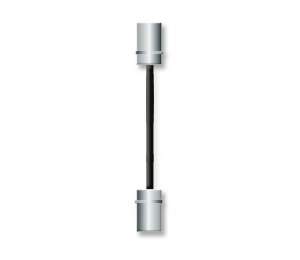

Fiber optic
LWL
|
|


Fiber optic cable - reliable signal transmission under difficult environmental conditions.
The system consists of a fiber-optic transmitter and a fiber-optic receiver. The fiber optic transmitter converts the electrical signals of a conventional incremental encoder into an optical signal. The receiver module converts the optical signal back into electrical signals. Up to 4 channels with inversion can be safely transmitted.| Mechanical | |
|---|---|
| Range | 2000 m |
| Dimension | 22 mm x 75 mm x 110 mm |
| Working temperature | -10 °C ... 60 °C |
| Protection level |
IP20 IP40 |
| Electrical | |
|---|---|
| Interfaces |
HTL TTL / RS422 |
| Inputs coding |
A, A|, B, B|, C, C|, D, D| A, A|, B, B|, C, C|, D, D| |
| Outputs coding |
A, A|, B, B|, C, C|, D, D| A, A|, B, B|, C, C|, D, D| |
| Power supply |
5 V DC 10...30 V DC |
| Transmission rate | 120 Mbit/s |
Innovative
- Signal transmission via just a single glass fiber.
- Safe signal transmission up to 2000 m.
- Input frequency up to 400 kHz.
- Input level 10 to 30 V or RS422.
- Inverted input signals.
- Resists extremely strong electro-magnetical fields.
- Signal transmission from several sensors possible thanks to 8 independent signal channels.
- Can be installed even where space is tight.
- Minimal installation depth.
- Connections plug-in HD-Sub-D15 or terminal clamp.
- Process control technology and automation technology.
- Applications sensitive to interference.
- High voltage plants.
- Plants with long transmission distances.
- Potential separation.
- Explosive areas.

 Due to a technical problem, our website is only available to a limited extent. This also affects our download service area. We are already working on the solution and ask for your understanding.
Due to a technical problem, our website is only available to a limited extent. This also affects our download service area. We are already working on the solution and ask for your understanding.





